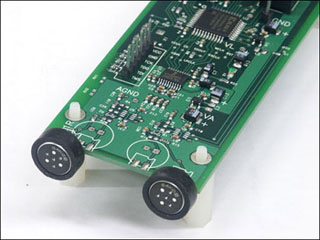Computer Science Notes On – Circuit Theory – For W.B.C.S. Examination.
কম্পিউটার বিজ্ঞানের নোট- সার্কিট তত্ত্ব – WBCS পরীক্ষা।
Circuit theory is an important and perhaps the oldest branch of electrical engineering. A circuit is an interconnection of electrical elements. These include passive elements, such as resistances, capacitances, and inductances, as well as active elements and sources (or excitations). Two variables, namely voltage and current variables, are associated with each circuit element.Continue Reading Computer Science Notes On – Circuit Theory – For W.B.C.S. Examination.
There are two aspects to circuit theory: analysis and design. Circuit analysis involves the determination of current and voltage values in different elements of the circuit, given the values of the sources or excitations. On the other hand, circuit design focuses on the design of circuits that exhibit a certain prespecified voltage or current characteristics at one or more parts of the circuit. Circuits can also be broadly classified as linear or nonlinear circuits.
Electric circuits or networks are the assemblage of devices and or equipment needed to connect the source of energy to the user or the device which exploits it. Communications systems, computer systems and power systems all consist of more or less complicated electric circuits which themselves are made up of a number of circuit elements. The devices and equipment mentioned above may be represented by ‘equivalent circuits’ consisting of these circuit elements, and an equivalent circuit must behave to all intents and purposes in the same way as the device or equipment which it represents.
In other words, if the device were put into one ‘black box’ and the equivalent circuit were put into another ‘black box’, an outside observer of the behaviour of each would be unable to say which black box contained the real device and which contained the equivalent circuit. In practice it is virtually impossible to achieve exact equivalence.
Circuit theory is a linear analysis; i.e., the voltage-current relationships for R, L, and C are linear relationships, as R, L, and C are considered to be constants over a large range of voltage and currents. Linearity gives rise to the principle of superposition, which states that in a circuit with more than one source present, the voltage or current anywhere in the circuit can be obtained by first finding the response due to one source acting alone, then the second source acting alone, and so forth.
The response due to all sources present in the circuit is then the sum of the individual responses. This is a powerful theorem which is useful since a circuit with only one source present can be much easier to solve. Now, how do we shut off all sources in the circuit but one? Recall what happens to an ideal voltage source when the amplitude is cranked to zero? One is left with a short circuit . Similarly, when a current source is cranked down to zero, one is left with an open circuit. Therefore, in a circuit with multiple sources, all sources except one are replaced with their respective short or open circuits. One can then proceed to solve for the desired circuit response with only one source present. The following example illustrates the technique.
Please subscribe here to get all future updates on this post/page/category/website


 +919674493673
+919674493673  mailus@wbcsmadeeasy.in
mailus@wbcsmadeeasy.in







































































































